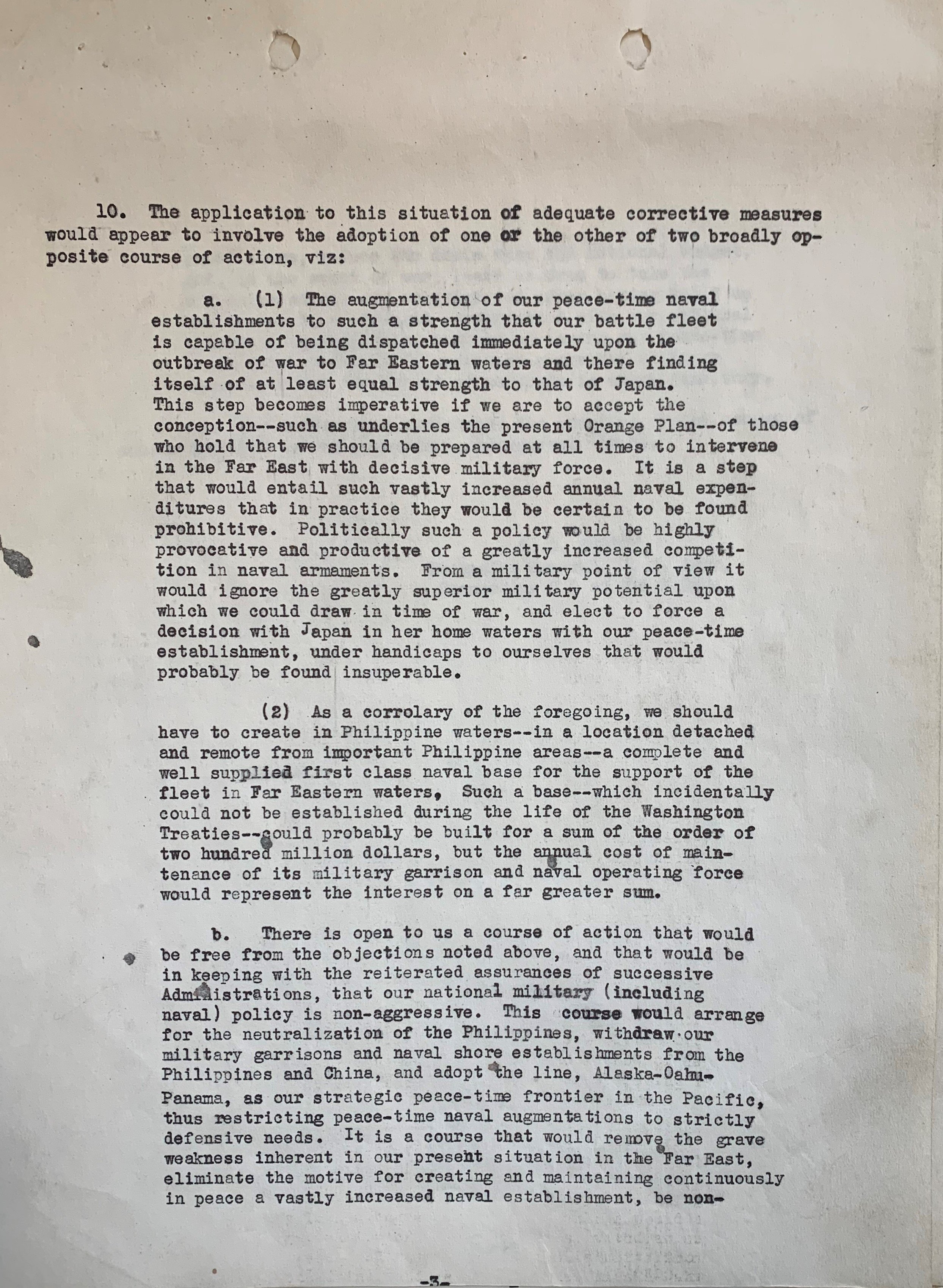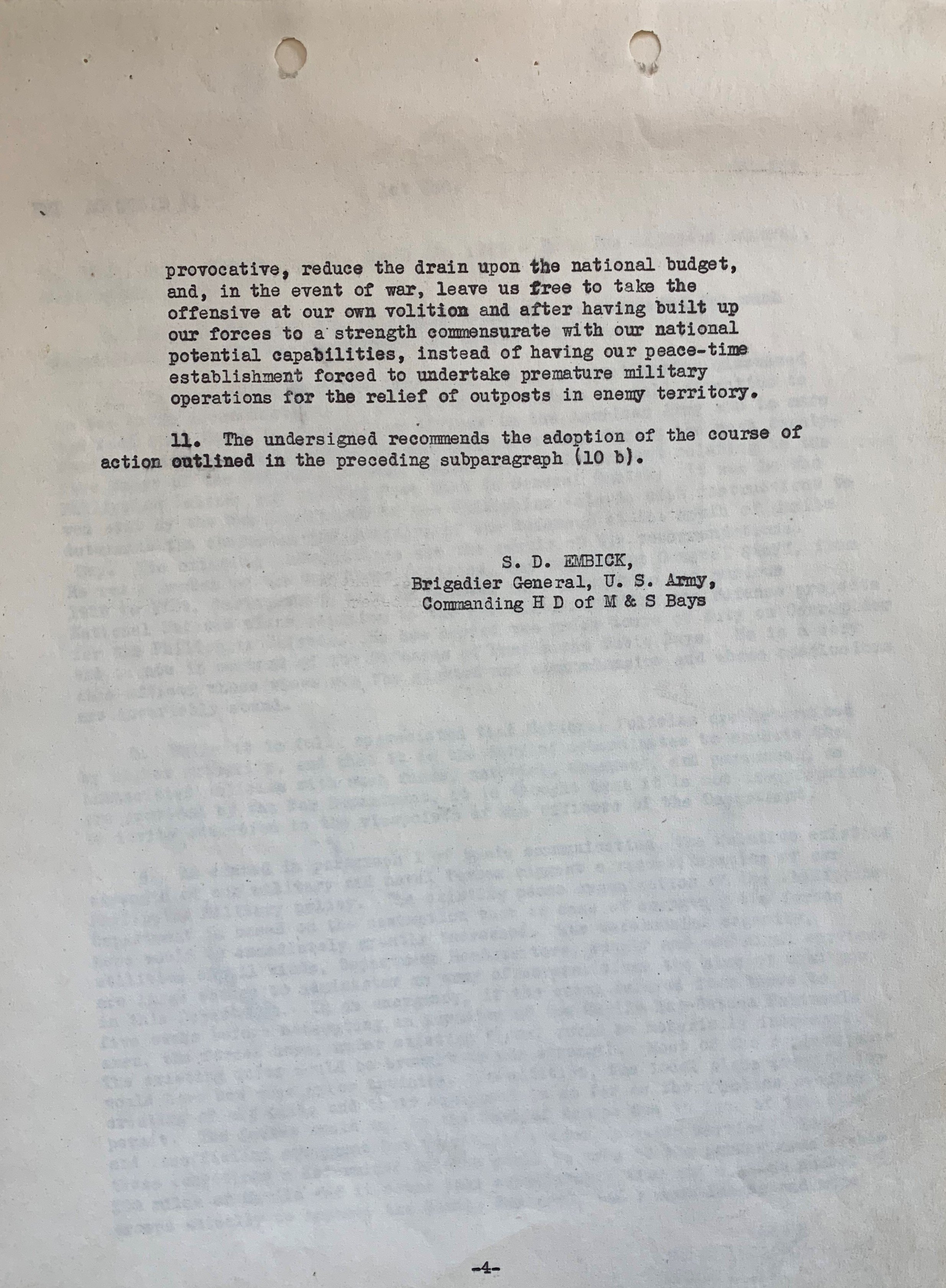#2 - The Greatest Memo Ever (July 2022)
“Acts of Madness.” The working title of my book is taken from the greatest memorandum ever, a four-page analysis of the situation in the Philippines by Brigadier Stanley Embick, commander of the the Manila Bay defenses in 1933.
Before getting to the document, I will offer three bits of context. First, Embick was widely regarded as one of the army’s top thinkers (please, no snarky comments). In 1907, then-Captain Embick had been one of the rising stars within the coast artillery, and so was selected to be one of the lead planners for the fortifications that he would go on to command. (My favorite part of those defenses is the other Fort Drum, a “concrete battleship” built upon a small rock in the bay. Check it out here.) That personal history is why Embick made repeated references to 1907 and would have been well known to everyone who read the memorandum. When Embick said that the strategic assumptions that had driven the original design were no longer valid, he spoke with unusual authority!
The second bit of necessary context is that for many years there had been tensions between what historian Edward Miller in War Plan Orange calls the “thrusters” and “cautionaries.” Miller’s book was focused on the navy but the labels can be loosely applied to the army as well, with MacArthur on the side of those who wanted a vigorous defense of the Philippines and a rapid movement by the fleet across the Pacific to aid the Philippine garrison. While commanding the Philippine Department a few years earlier, MacArthur had developed an absurdly ambitious local “Orange” plan (the military used color codewords to denote what adversary they addressed; Japan was “Orange”) that relied heavily on significant numbers of troops and equipment that did not exist.
Finally, it should be noted that Embick was writing against the backdrop of a policy shift in the United States. The previous year, Congress had passed the Hares-Hawes-Cutting Act that sought to grant full sovereignty to the Philippines but with a provision for retaining U.S. military bases. The Philippine Legislature rejected this proposition, but there was a general sense that the time of colonial control was coming to an end. The next year, the Tydings-McDuffie Act would set a firm ten-year deadline for U.S. withdrawal. The same year, the increasingly aggressive Japanese government set up the puppet state of Manchukuo. With Franklin D. Roosevelt in office just a few weeks when Embick wrote his memorandum, there was definitely a sense of shifting plates both in U.S. policy and the security environment in the western Pacific.
As for the memorandum itself, aside from the wit I admire the clarity of thought and tight organization. Embick knew how to make his case. Without further ado, the greatest memorandum ever…
(Stanley D. Embick to Ewing E. Booth, 19 April 1933, File 3251-1, Entry 281, Record Group 165, National Archives and Record Administration, College Park, Maryland)



